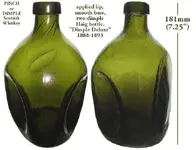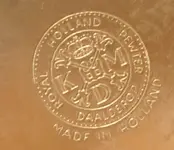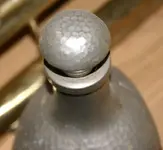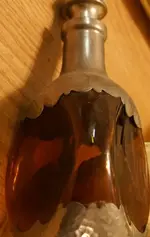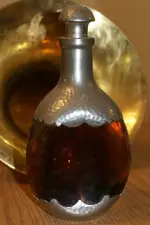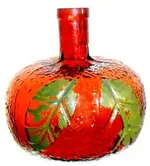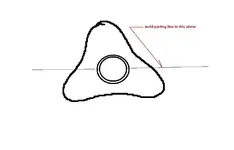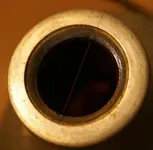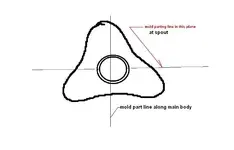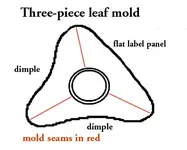Harry Pristis
Bronze Member
- Joined
- Feb 5, 2009
- Messages
- 2,353
- Reaction score
- 1,294
- Golden Thread
- 0
- Location
- Northcentral Florida
- #1
Thread Owner
I bought this bottle recently without knowing anything about it. It is (I believe) a Dimple bottle, or in the USA, a Pinch bottle. It was used for a Scottish whisky (or whiskey).
Pinch bottles - the recent ones - are not rare. They are characterized by three "dimples" or "pinches" in the sides.
[size=14pt]This one has two dimples and a flat panel, no doubt for a paper label. This bottle is olive green glass, while first amber, then colorless glass has been used during the twentieth century. I suspect that this is a bottle used early in the evolution of the Dimple brand with its distinctive bottle.
This is from a UK web-site:
"John Haig & Company Limited
Principle Brands
Dimple 12 year old
Dimple 15 year Old
Also Know as Pinch in The USA Market
Haig Gold Label
"The Haig whisky distilling dynasty can rightfully lay claim to be the oldest Scotch whisky distillers having being active distillers for over 300 years.
"The first recording of Haig distilling was in 1655 when Robert Haig was summoned to appear before the Kirk Session for working his still on the Sabbath.
"He had established a farm at Throsk Stirlingshire in 1627 and this is taken to be the entry date of the Haig’s into distilling. . . .
". . . In 1856 John Haig &Co joined in with six other Lowland distillers to form a trade agreement to protect the individual and collective interests of the members. Eventually this trade agreement led to the formation of the Distillers Company Limited (DCL) in 1877 with John Haig and his son Hugh as directors
"During 1882 John Haig & Co merged with David Smith & Co and became a limited company with Hugh Haig, John Haig’s Son, as chairman.
"John Alicius Haig released the Dimple Deluxe blend in 1888. The distinctive 3 pinch bottle was introduced in 1893 by George Ogilvy Haig.
"DCL acquired the entire ordinary share capital of John Haig & Co Ltd in March of 1919 the take over of the Haig dynasty was completed in 1923 with DCL taking control of Haig & Haig Ltd."
Pinch bottles - the recent ones - are not rare. They are characterized by three "dimples" or "pinches" in the sides.
[size=14pt]This one has two dimples and a flat panel, no doubt for a paper label. This bottle is olive green glass, while first amber, then colorless glass has been used during the twentieth century. I suspect that this is a bottle used early in the evolution of the Dimple brand with its distinctive bottle.
This is from a UK web-site:
"John Haig & Company Limited
Principle Brands
Dimple 12 year old
Dimple 15 year Old
Also Know as Pinch in The USA Market
Haig Gold Label
"The Haig whisky distilling dynasty can rightfully lay claim to be the oldest Scotch whisky distillers having being active distillers for over 300 years.
"The first recording of Haig distilling was in 1655 when Robert Haig was summoned to appear before the Kirk Session for working his still on the Sabbath.
"He had established a farm at Throsk Stirlingshire in 1627 and this is taken to be the entry date of the Haig’s into distilling. . . .
". . . In 1856 John Haig &Co joined in with six other Lowland distillers to form a trade agreement to protect the individual and collective interests of the members. Eventually this trade agreement led to the formation of the Distillers Company Limited (DCL) in 1877 with John Haig and his son Hugh as directors
"During 1882 John Haig & Co merged with David Smith & Co and became a limited company with Hugh Haig, John Haig’s Son, as chairman.
"John Alicius Haig released the Dimple Deluxe blend in 1888. The distinctive 3 pinch bottle was introduced in 1893 by George Ogilvy Haig.
"DCL acquired the entire ordinary share capital of John Haig & Co Ltd in March of 1919 the take over of the Haig dynasty was completed in 1923 with DCL taking control of Haig & Haig Ltd."

